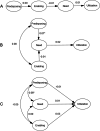Understanding the context of healthcare utilisation for children under-five with diarrhoea in the DRC: based on Andersen behavioural model
- PMID: 35120503
- PMCID: PMC8815172
- DOI: 10.1186/s12913-022-07530-4
Understanding the context of healthcare utilisation for children under-five with diarrhoea in the DRC: based on Andersen behavioural model
Abstract
Background: Diarrhoea is one of the leading causes of death among children under 5 years old in the Democratic Republic of the Congo (DRC). Despite positive effects on prognosis, there is limited literature about the healthcare-seeking behaviours of children with diarrhoea, especially in the DRC. This study used the Andersen Behavioural Model, a theoretical framework, which was commonly adopted to study healthcare utilisation, to investigate and predict factors associated with the use of healthcare to treat diarrhoea in the DRC.
Methods: Data collected from 2626 under-five children with diarrhoea in the last 2 weeks from the Multiple Indicators Cluster Survey conducted by the National Institute of Statistics in 2017-2018, in collaboration with the United Nations Children's Fund were used in this study. Both direct and indirect relationships among four latent variables: predisposing traits, enabling resources access, health needs, and health services use were measured using the structural equation modelling to test the Andersen behavioural model. The confirmatory Factor Analysis model was also modified based on the DRC context to explore this further.
Results: The modified model had the goodness of fit index (GFI) of 0.972, comparative fit index (CFI) of 0.953 and RMSEA of 0.043 (95% CI: 0. 040, 0.047). Health needs (especially diarrhoea) had the largest positive direct effect on healthcare utilisation (standardized regression coefficient [β] = 0.135, P < 0.001), followed by "enabling resources" (β = 0.051, P = 0.015). Health needs also emerged as a mediator for the positive effect of predisposing on utilisation (indirect effect, β = 0.014; P = 0.009).
Conclusion: Access to improved water and improved sanitation, as well as socioeconomic factors like household wealth, were significantly associated with health-seeking behaviours for diarrhoea treatment in the DRC. Besides, caregivers who own higher levels of educational attainments were more inclined to have positive health services uses during the treatments. Efforts are needed to enhance the oral rehydration therapy coupled with educating caregivers on its appropriate use.
Keywords: Andersen Behavioural model; DRC; Diarrhoea; Healthcare utilisation; Under five-year-old children.
© 2022. The Author(s).
Conflict of interest statement
The authors declare that they have no competing interests.
Figures
Similar articles
-
The Effects of Conflicts and Self-Reported Insecurity on Maternal Healthcare Utilisation and Children Health Outcomes in the Democratic Republic of Congo (DRC).Healthcare (Basel). 2021 Jul 3;9(7):842. doi: 10.3390/healthcare9070842. Healthcare (Basel). 2021. PMID: 34356220 Free PMC article.
-
Diarrhoea, acute respiratory infection, and fever among children in the Democratic Republic of Congo.Soc Sci Med. 2009 May;68(9):1728-36. doi: 10.1016/j.socscimed.2009.02.004. Epub 2009 Mar 11. Soc Sci Med. 2009. PMID: 19285371
-
Maternal behavioural risk factors for severe childhood diarrhoeal disease in Kinshasa, Zaire.Int J Epidemiol. 1993 Apr;22(2):327-33. doi: 10.1093/ije/22.2.327. Int J Epidemiol. 1993. PMID: 8505192
-
Utilisation of dental services by Brazilian adults in rural and urban areas: a multi-group structural equation analysis using the Andersen behavioural model.BMC Public Health. 2020 Jun 17;20(1):953. doi: 10.1186/s12889-020-09100-x. BMC Public Health. 2020. PMID: 32552777 Free PMC article.
-
COVID-19 epidemiology, health services utilisation and health care seeking behaviour during the first year of the COVID-19 pandemic in Mweso health zone, Democratic Republic of Congo.J Glob Health. 2024 Apr 26;14:05016. doi: 10.7189/jogh.14.05016. J Glob Health. 2024. PMID: 38665056 Free PMC article.
Cited by
-
Risk Factors for Acute Respiratory Infections in Children Between 0 and 23 Months of Age in a Peri-Urban District in Pakistan: A Matched Case-Control Study.Front Pediatr. 2022 Jan 10;9:704545. doi: 10.3389/fped.2021.704545. eCollection 2021. Front Pediatr. 2022. PMID: 35083182 Free PMC article.
-
Prevalence of ARI, fever, and diarrhea among under-five children and the influencing factors in southwestern coastal region of Bangladesh.BMC Public Health. 2025 Aug 27;25(1):2951. doi: 10.1186/s12889-025-24415-3. BMC Public Health. 2025. PMID: 40866902 Free PMC article.
References
-
- Wardlaw T, Salama P, Brocklehurst C, Chopra M, Mason E. Diarrhoea: why children are still dying and what can be done. Lancet. 2010;375(9718):870–872. - PubMed
-
- Millennium Development Goals (MDGs) [https://www.who.int/news-room/fact-sheets/detail/millennium-development-...].
-
- World Health O . Improving health system efficiency: Democratic Republic of the Congo: improving aid coordination in the health sector. Geneva: World Health Organization; 2015.
-
- Butcher F, Galanek JD, Kretschmar JM, Flannery DJ. The impact of neighborhood disorganization on neighborhood exposure to violence, trauma symptoms, and social relationships among at-risk youth. Soc Sci Med. 1982;2015(146):300–306. - PubMed
-
- WHO/maternal and infant mortality [https://www.who.int/news-room/fact-sheets/detail/maternal-mortality].
MeSH terms
LinkOut - more resources
Full Text Sources
Medical
Miscellaneous





